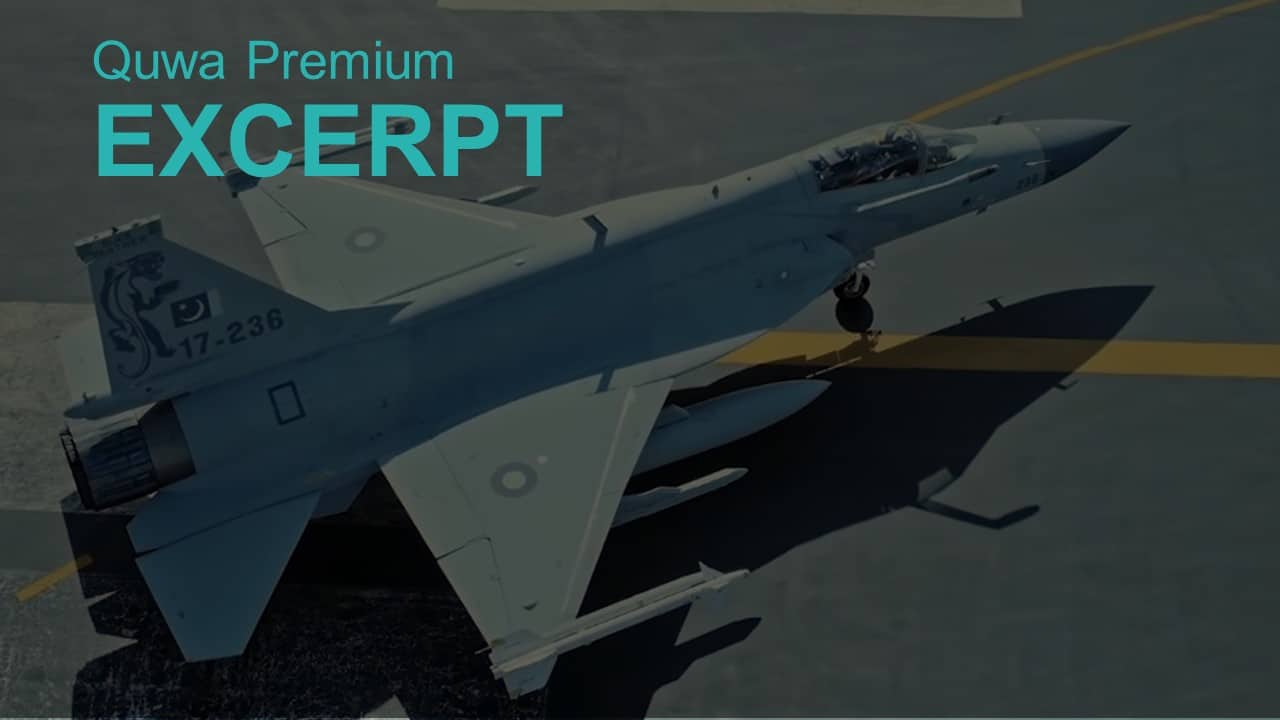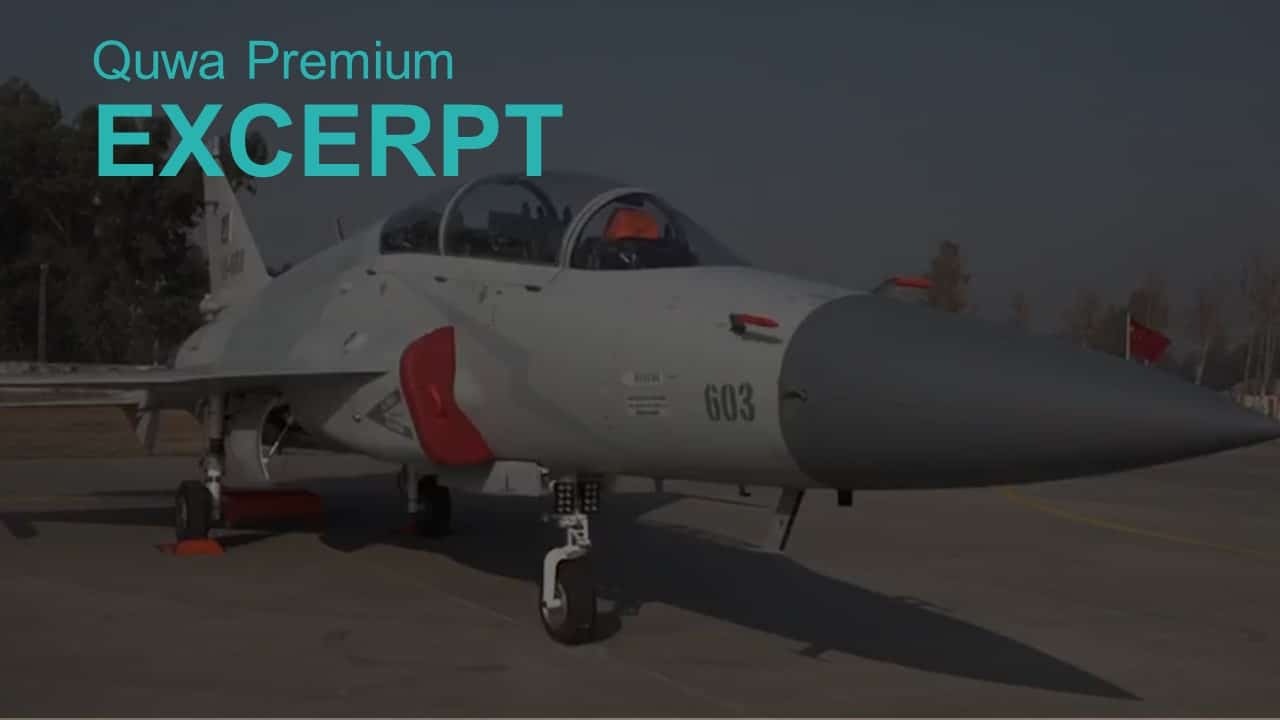2000Views

Could a Western Radar Work on the JF-17?
The centerpiece of the JF-17 Block 3, the upcoming (and most extensive) development of the Pakistan Air Force’s (PAF) backbone fighter aircraft, will be its active electronically scanned array (AESA) radar.
With the PAF Chief of Air Staff (CAS), Air Chief Marshal (ACM) Mujahid Anwar Khan, expressing hope for inducting the Block 3 in March 2020[1], the PAF is expected to decide on a radar by the end of 2019.
The leading candidates are the Nanjing Research Institute of Electronics Technology (NRIET) KLJ-7A, Leihua Electronic Technology Research Institute (LETRI) LKF601E, and Leonardo Grifo-E. Though the PAF is largely expected to select a Chinese AESA radar, the Grifo-E is, reportedly, still a factor.
The Grifo-E’s continuing inclusion in the mix is interesting because Aviation Industry Corporation of China (AVIC) had reportedly stated that it did not expect the PAF to select a Western AESA radar. AVIC’s rationale was that neither party would share its respective source-codes.[2]
If this is still the case, then the PAF’s reported interest in the Grifo-E would imply that it is interested in a Western air-to-air and air-to-surface munitions suite. If not, then the Grifo-E would suggest that the PAF has an alternative route, perhaps a third-party (i.e., non-European and non-Chinese) source.
Background on the Leonardo Grifo-E
The Grifo-E uses an undisclosed number of gallium nitride (GaN)-based transmit/receive modules (TRM). Compared to older gallium arsenide (GaA)-based TRMs, GaN-based TRMs are more energy efficient, and can offer better performance/output as well as a longer lifecycle.
In promoting its own GaN technology, Saab outlined that GaN-based AESA radars would enable for small and lightweight fighters to deploy high-performance AESA radars. In other words, GaN would help offset limitations in internal space, weight, and power-consumption requirements.
In terms of the radar’s performance, Leonardo outlined that the Grifo-E can track 24 targets in its track-while-scan (TWS) mode. It can track “fighter-sized targets” at over 138 km in track formation range mode, and 157 km-plus in look-up detection range mode. In its air-to-air mode, the Grifo-E can track up to eight targets. In addition, the Grifo-E has simultaneous air-to-air and air-to-surface modes.
In its specification sheet, Leonardo also lists a large number of other features, including synthetic aperture radar (SAR) with ground-moving target-indication (GMTI), sea surface search and track, inverse SAR, air-to-ground ranging, and other capabilities. It also features core AESA radar capabilities, such as elevated resistance to electronic warfare (EW) and electronic countermeasures (ECM)…
End of Excerpt (438/1,528 words)
You can read the complete article by logging in (click here) or subscribing to Quwa Premium (click here).


